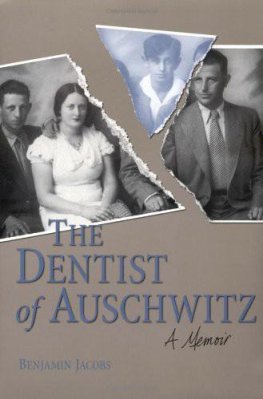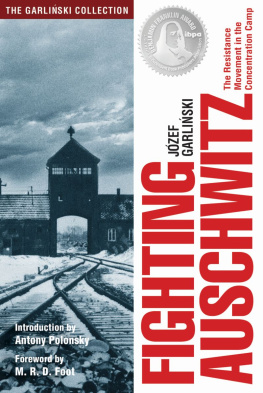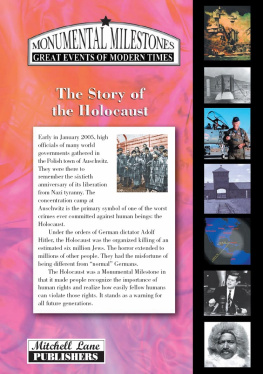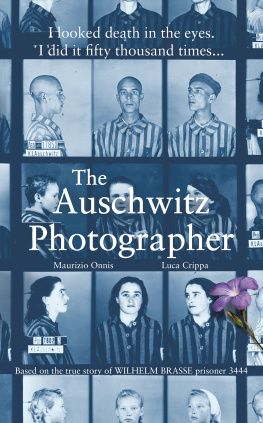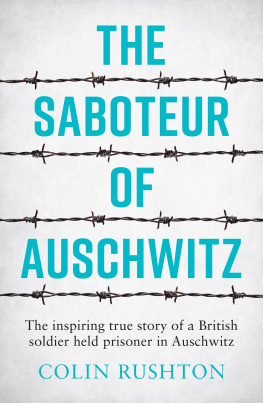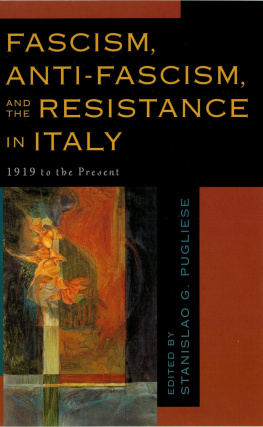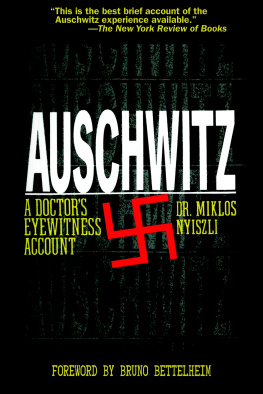


Three Tearless Histories
By ERICH HACKL
Translated by MIKE MITCHELL
Copyright 2017 by DoppelHouse Press
Drei trnenlose Geschichten
Copyright 2014 by Diogenes Verlag AG Zrich
ALL RIGHTS RESERVED
DESIGNED BY CURT CARPENTER
Partial support for this translation thanks to the Bundeskanzleramt sterreich.
Publishers Cataloging-in-Publication data
NAMES: Hackl, Erich, author. | Mitchell, Mike, translator.
TITLE: Three tearless histories /by Erich Hackl; translated by Mike Mitchell.
DESCR IPTION: Los Angeles, CA: Doppelhouse Press, 2017.
IDENTIFIERS: ISBN 97809970034-5-1 (ebook)
LCCN 2016958417
SUBJECTS: LCSH Austria. | Klagsbrunn, Kurt, 1918-2005. | Brasse, Wilhelm, 1917-2012. | Tschofenig, Gisela. | Tschofenig, Pepe. | Photographers--Austria--History. | Photographers--Poland--History. | Expatriate artists. Holocaust, Jewish (1939-1945)--Austria. | Auschwitz (Concentration camp). | Holocaust, Jewish (1939-1945)--Poland. | Austria--Emigration and immigration. | Brazil--Social life and customs. | BISAC PHOTOGRAPHY / Individual Photographers / Essays | PHOTOGRAPHY / History
CLASSIFICATION: LCC JV8015 .H33 2017 | DDC 940.53/086--dc23
CONTENTS
T HERE'S NO FAMILY TREE, so it's imperative we stick to the photo in which they're looking out at us from a whole century ago. Ignaz Klagsbrunn, the head of the family, amiable, relaxed or even with an ironic smile beneath his well-groomed mustache. With his right hand he's holding his granddaughter Flora by the arm, his left is placed on the ornate round table on which his wife Johanna is also leaning, with Rosi, their second granddaughter, in her lap. Johanna Klagsbrunn, ne Thieberg, has thick, dark hair, just about kept in place by a center parting, while her husband's fair hair seems to be thin and already receding at the temples. Two people of surprisingly contemporary appearance, close to ours, who look contented but neither serene nor split into an authoritarian brow and a forbearing heart. And still astonishingly young. In the prime of life.
All eleven children are sitting or standing around the couple in a suggestion of a semicircle. At the front, on crudely made garden chairs, the two eldest, their daughters Lola and Bertha. At an angle behind them, the spitting image of each other in stature, hairstyle, luxuriant whiskers, their husbands Karl Goldstein and Benno Ostiller. Doctors of medicine both of them, moreover neighbors in the same house, 51 Leopoldsgasse, where they pursue their profession. It is striking how far Bertha Ostiller is leaning back, has put her forearms behind her back, her unusual posture and the suggestion of a bulge under her loose dress, that comes down to the ground, make us think she might be pregnant.
It isn't difficult to distinguish between the Klagsbrunn sons and the sons-in-law (the third, Sida's husband Johann Frey, has a pince-nez and a Vandyke beard), for some of the former, like the daughters, clearly take after their mother: their dark eyes, their melancholy look, their unmanageable mop of hair. Only the two eldest sons, Josef and Hugo, resemble their father, though less in their appearance than in the indulgent interest they take in the photographer or his plate camera. In fact no one shows a lack of attention. Perhaps the youngest daughter, Cilla, is looking a bit sullen. Or impatient because she has to keep still too long for her taste.
Not one of them is smiling, neither Bruno who, forty years later, will die together with his wife Grete in a subcamp of Jasenovac Concentration Camp, nor Samek, of whom we read that he has been missing since 1938, nor Molo (i.e. Maximilian) who will have a dental practice in the center of Vienna, then flee to Shanghai with his wife Frieda and finally die, destitute, in San Francisco, nor Noli, (Dietrich Arnold) who, five decades later and with a persistence matched only by his lack of success, will demand the restitution of or compensation for the equipment and other furnishings which the two dealers, Josef Prossnitz and Theodor Partik, removed from his own dental surgery in the Mariahilf district of Vienna in September 1942. Stole, to be more precise, and since it is accepted that they were acting 'on the instructions of the former Property Transfer Office' the Federal Ministry of Finance sees no reason to grant his request for restitution.
Leo, the second youngest in the family, isn't smiling either. He's standing in the back row, in front of the terrace door with the windows that reflect the light, and wearing a high wing collar going around his neck like a ruff. At the time the photo was taken he's sixteen years old.
I FIRST MET LEOS GRANDSON two and a half years ago in Rio de Janeiro. The Universidade Federal Fluminese, the campus of which is in Niteri, on the other side of the bay, had invited me to give a number of lectures and after the first few days in Rio I was somewhat surprised that the inhabitants did not at all conform to the image that is generally ascribed to them: I found them neither particularly cheerful nor loquacious or bubbling over with vivacity. Until I got to know Victor Hugo Klagsbrunn that is. He was warm-hearted in a way that was almost incidental, assured, imaginative and blithely unconcerned about time. Butwith one exception: for my final lecture we arrived in Niteri an hour and a half latethings always worked out at the last minute. An authentic carioca, then, surrounded by unauthentic, depressed and harassed seeming citizens of Rio, even though, or because, Victors father came from Vienna, his mother from Berlin and hed spent almost sixteen years in exile. He invited me to his home, a spacious, luxuriously furnished apartment in Copacabana, where I met his wife, Marta, who had been together with him in exile, and a barking white ball of wool that answered to the name of Tuca.
There, in the Rua Ministro Viveiros de Castro, Victor keeps something which I think gives him the most pleasure of all his family heirlooms: a poster of the Floridsdorfer Athletiksport-Club announcing two matches in the Austrian soccer championship being played at the Hohe Warte stadium on the same day, Sunday 11 September: FAC against Wacker and Vienna against WAC. As Victor discovered, the poster is from 1932 and has, among many others, adverts for his grandfathers coal business, Karl Jizdas sports equipment shop and the Sinai Clothing Store. Karl Jizda was a legendary center-forward for the FAC, Leo Klagsbrunn its president and the Sinai Clothing Store was on the first floor of Am Spitz 2 where the club also had its premises. We will come across that store again under the misleading and disrespectful designation of furniture shack. And the match didnt take place on the Sunday but on the Saturday, as Victors grandfather wrote on the poster in blue pencil, and FAC beat Wacker Wien 3-2, with goals from Pepi Stroh (2) and Gustl Jordan.
There was only a little Victor could tell me about the history of his forebears, for the early death of his father and his own circumstances had prevented him from familiarizing himself with them. On the other hand he did present me with a pile of documents. Most came from the estate of his Uncle Kurt, others hed had someone dig out of the Austrian State Archives for him. And he told me his own story, and Marta hers, the story of their life together. A story of persecution, worse than that of his parents and grandparents. I will relate both of them, the way I heard and remembered them, the way Victor and I investigated them in Vienna two months later, and the way we have reconstructed them since then in a question-and-answer carousel between here and there: the basic data, rather sparse, not very vivid, without feelings, which our imagination has to supply.


